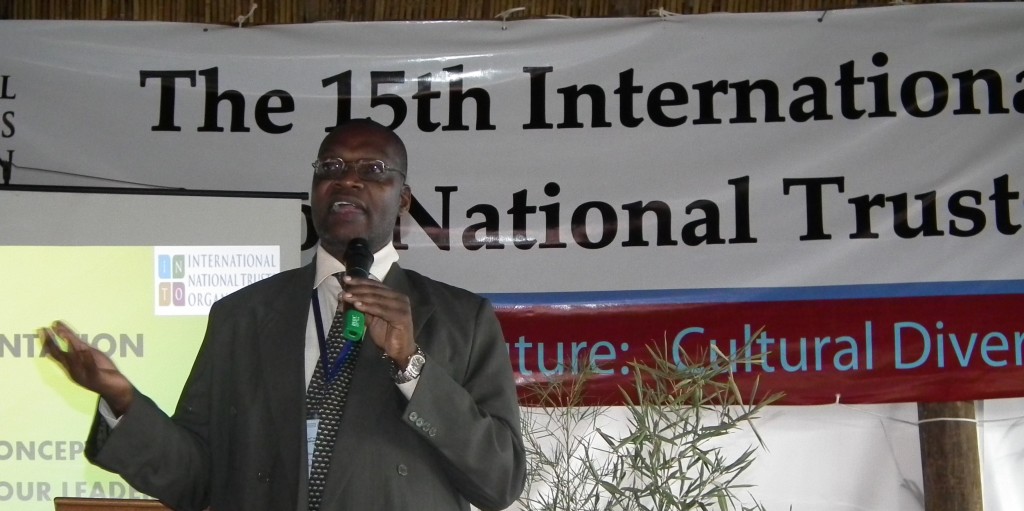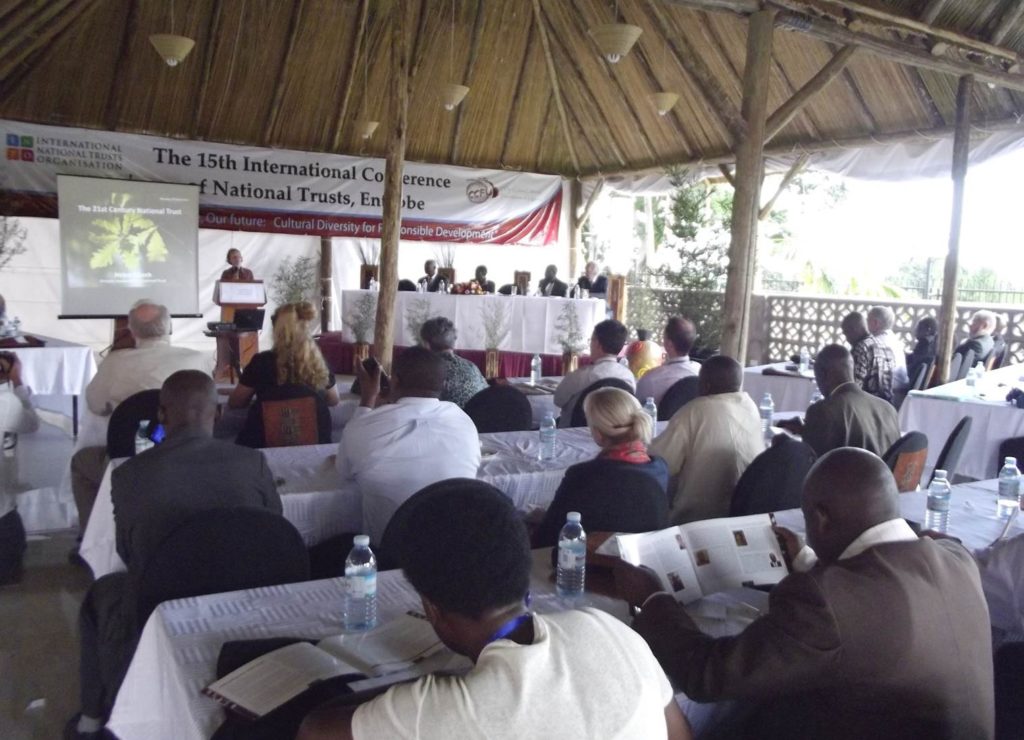-
2013 ICNT in Entebbe, Uganda
Posted on November 23, 2017The International Conference of National Trusts is still at the heart of our movement and every two years we convene in a different continent. In 2013, the 15th edition, ‘Our Heritage, Our Future’: Cultural diversity for responsible development’, was held in Entebbe, Uganda from 30 September – 4th October, attended by almost 200 delegates.

It’s good to share, ICNT15 Entebbe, Uganda 2013
Ten years ago, the global National Trust community came together in Scotland for the 10th International Conference of National Trusts, where we agreed to work more closely together to increase efforts to conserve natural and cultural heritage in their respective communities. It is interesting to look back at the Edinburgh Declaration of 2003 and see just how far we have come. Those who remember the buzz of the conference discussions may not have foreseen how INTO would look in 2013 or that we would be holding the 15th ICNT in Uganda!
This was the first time that the National Trusts of the world had met in Africa, and in addition to plenary and workshop sessions, our hosts, the Cross-Cultural Foundation of Uganda, organised a series of “Learning Journeys,” a unique opportunity to experience the conference themes in action through demonstrations of barkcloth making, traditional medicine and music, and visits to community museums and the reconstruction of the Kasubi Tombs UNESCO World Heritage Site.

The first conference strand focused on safeguarding our heritage: How can various forms of cultural expression be better protected, including for indigenous communities and minority groups? In the face of increasing man-made and natural threats, what is the role for youth and heritage education? We had the opportunity to listen to committed voices and to be moved by heroic endeavours.
Who could fail to be inspired by the Bolivian Society for Historical Studies, Heritage and Restoration and its tenacious efforts to safeguard the Bickenbach country house in Cochabamba? Built in the Moorish style for the German family of Ernesto Bickenbach, the house and its garden setting became neglected and at risk of redevelopment. After a lengthy and menacing battle, the Bolivian Society for Historical Studies, Heritage and Restoration lobbied for the house to be expropriated and put to cultural use for the benefit of the city. The society also successfully used ICOMOS’s 1981 Florence Charter to argue that the historic garden could not be separated from the house which accompanies it and have managed to keep the site intact for future generations.

Bickenbach country house in Cochabamba, Bolivia As part of the second thread of the conference, delegates discussed how to balance cultural values with conservation and the need for sustainable development.We heard from the Trust for African Rock Art (TARA), about successful efforts to engage local communities emotionally with rock art sites, finding alternative solutions to damaging practices and shared site management to deliver economic benefit through responsible tourism. The Kondoa rock art sites, located on the eastern slopes of the Maasai escarpment bordering the Great Rift Valley in Tanzania were listed as a UNESCO World Heritage Site in 2006. The paintings depict elongated people, animals, and hunting scenes as well as abstract markings and can be found in caves and semi-exposed rock shelters. With a rapidly growing population there has been increasing pressure on the rock art sites and the conservation area through deforestation, farming, quarrying, and charcoal burning. TARA has worked with local partners to increase understanding and community engagement, without which the rock art could be completely destroyed.

Overhanging granite boulders with protected area in Kondoa, Tanzania. The site has been vandalised by entrepreneurs digging
for gold believed buried here by Germans during the 1914-1918 war. An official custodian stands below large panel of Late
White geometric designs. © TARAUnlocking potential was the third conference strand: What can we learn from the experience of National Trusts in protecting heritage in different contexts? What new experiences and ideas exist for financing, managing, and promoting heritage development? One workshop shone the spotlight on the different National Trusts models from Australia to Zimbabwe. We saw that although the organisations we represent are incredibly different, there are common threads running through our thinking, set-ups, priorities, what inspires us, and the challenges we face. All have an important role to play within the INTO family and can contribute to the debate.
We took the opportunity to prepare our ‘Entebbe Declaration’ which urged global action to protect and promote tangible and intangible heritage, especially within the least economically developed nations.

The Declaration also called for the recognition of the role played by National Trusts in preserving, conserving and promoting heritage, and committed us to working with governments around the world to develop appropriate heritage polices and support the growth of civil society.

 44 (0)20 7824 7157
44 (0)20 7824 7157